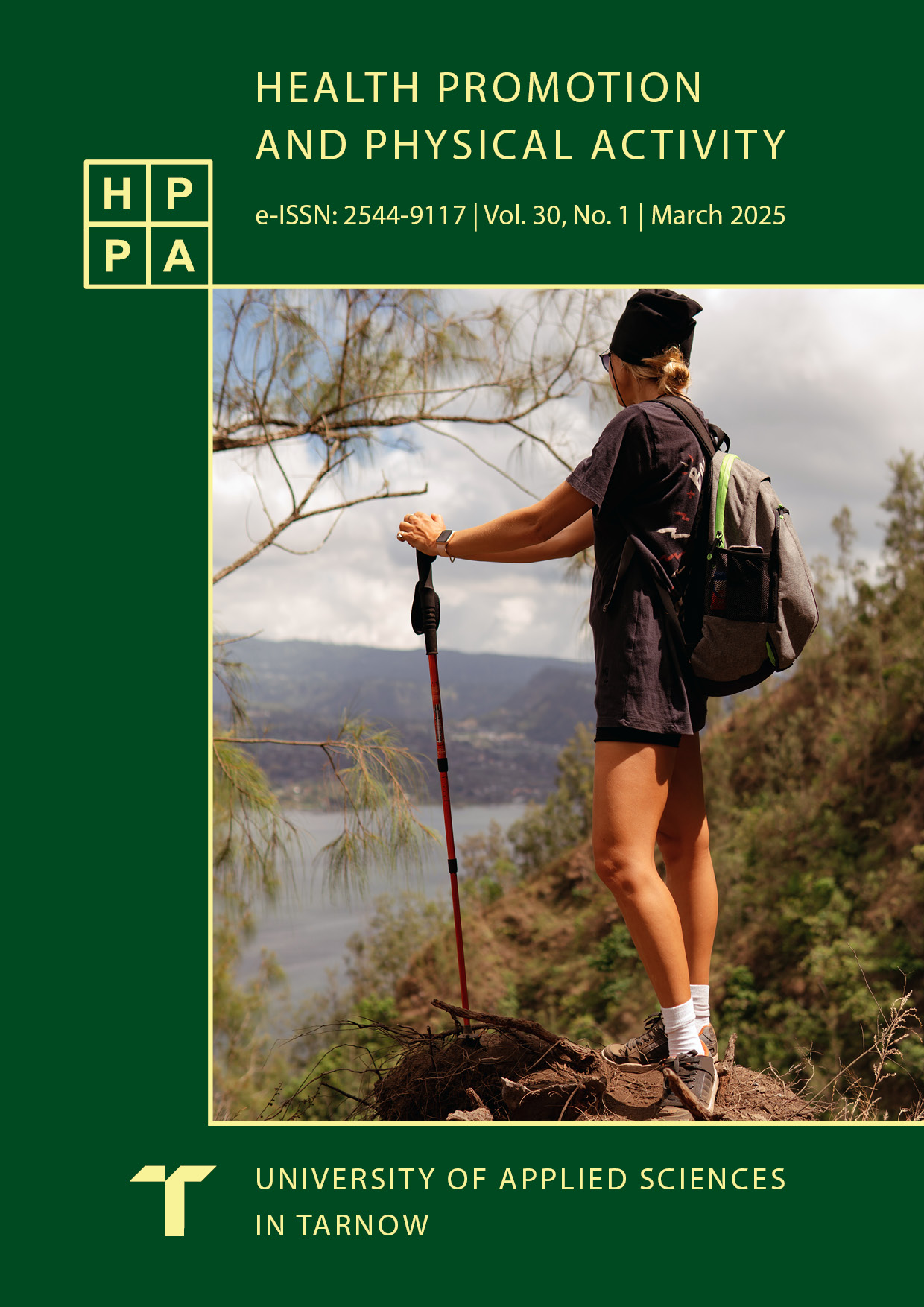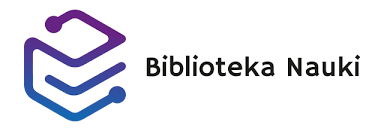Comparison of physical activity levels and musculoskeletal disorders among academicians with different chronotypes
DOI:
https://doi.org/10.55225/hppa.631Keywords:
academician, chronotype, physical activity, musculoskeletal disordersAbstract
Chronotype is one of the factors affecting individuals’ health behaviors. This descriptive and comparative study aimed to identify the chronotype of academicians and determine their physical activity levels and musculoskeletal disorders according to chronotype. Of the academicians, 23.9% (n = 47) were morning type, 58.4% (n = 115) were intermediate type, and 17.7% (n = 35) were evening type. Academicians with morning chronotype were more likely to have a moderate physical activity level (p < 0.05). Academicians frequently experience pain, aches and discomfort in the upper back, neck and lower back areas. However, there was no statistically significant difference between musculoskeletal disorders of academicians in terms of chronotype (p > 0.05). It is recommended that physical activity be increased in academics with evening chronotype, precautions be taken for common musculoskeletal disorders, and the effects of chronotype on the musculoskeletal system be examined in a larger sample group.
Downloads
References
Vitale JA, Weydahl A. Chronotype, physical activity, and sport performance: A systematic review. Sports Med. 2017;47(9):1859-1868. doi: 10.1007/s40279-017-0741-z. DOI: https://doi.org/10.1007/s40279-017-0741-z Google Scholar
Mota MC, Waterhouse J, De-Souza DA, et al. Association between chronotype, food intake and physical activity in medical residents. Chronobiol Int. 2016;33(6):730-739. doi: 10.3109/07420528.2016.1167711. DOI: https://doi.org/10.3109/07420528.2016.1167711 Google Scholar
Karahan A, Abbasoğlu A, Uğurlu Z, Işık SA, Kılıç G, Elbaş NÖ. Determination of sleep quality, fatigue, and concentration in nurses according to their shifts and chronotype. J Psychiatr Nurs. 2020;11(2):98-105. doi: 10.14744/phd.2019.90277. DOI: https://doi.org/10.14744/phd.2019.90277 Google Scholar
Kurt C. Chronobiology and physical performance: Review. Turkiye Klinikleri J Sports Sci. 2010;2:103-108. Google Scholar
Montaruli A, Castelli L, Mulè A, et al. Biological rhythm and chronotype: New perspectives in health. Biomolecules. 2021;11(4):487. doi: 10.3390/biom11040487. DOI: https://doi.org/10.3390/biom11040487 Google Scholar
Adan A, Archer SN, Hidalgo MP, Di Milia L, Natale V, Randler C. Circadian typology: A comprehensive review. Chronobiol Int. 2012;29(9):1153-1175. doi: 10.3109/07420528.2012.719971. DOI: https://doi.org/10.3109/07420528.2012.719971 Google Scholar
Glavin EE, Ceneus M, Chanowitz M, et al. Relationships between sleep, exercise timing, and chronotype in young adults. J Health Psychol. 2021;26(13):2636-2647. doi: 10.1177/1359105320926530. DOI: https://doi.org/10.1177/1359105320926530 Google Scholar
Sempere-Rubio N, Aguas M, Faubel R. Association between chronotype, physical activity and sedentary behaviour: A systematic review. Int J Environ Res Public Health. 2022;19(15):9646. doi: 10.3390/ijerph19159646. DOI: https://doi.org/10.3390/ijerph19159646 Google Scholar
Dhuli K, Naureen Z, Medori MC, et al. Physical activity for health. J Prev Med Hyg. 2022;63(2 Suppl 3):E150-E159. doi: 10.15167/2421-4248/jpmh2022.63.2S3.2756. Google Scholar
World Health Organization T. Physical activity. Available at: https://www.who.int/westernpacific/health-topics/physical-activity#:~:text=Conversely%2C%20physical%20inactivity%20has%20been,as%20stroke%2C%20diabetes%20and%20cancer. Accessed February 21, 2025. Google Scholar
Cinar S, Bavli O. Investigation the physical activity level of academics: Çanakkale sample. Turkish J Sport Exerc. 2014;16(3):8-12. doi: 10.15314/TJSE.201439606. DOI: https://doi.org/10.15314/TJSE.201439606 Google Scholar
Özdinç S, Kayabınar E, Özen T, Turan FN, Yılmaz S. Musculoskeletal problems in academicians and related factors in Turkey. J Back Musculoskelet Rehabil. 2019;32(6):833-839. doi: 10.3233/BMR-181171. DOI: https://doi.org/10.3233/BMR-181171 Google Scholar
Öncü E, Köksoy Vayısoğlu S, Güven Y. Musculoskeletal disorders prevalance, job-related strain and related factors among academicians. Gümüşhane Univ J Health Sci. 2021;10(2):194-204. DOI: https://doi.org/10.37989/gumussagbil.687210 Google Scholar
Kim S, Park WJ, Cho S, et al. The relationship between chronotypes and musculoskeletal problems in male automobile manufacturing workers. Ann Occup Environ Med. 2021;33:e26. doi: 10.35371/aoem.2021.33.e26. DOI: https://doi.org/10.35371/aoem.2021.33.e26 Google Scholar
Alshana O, Khan MH. 2022. Impacts of chronotype on personality, stress-anxiety, and physical activity in a university teaching staff. J Global Sci Res. 2022;7(1):2011-2018. Google Scholar
Punduk Z, Gur H, Ercan I. A reliability study of the Turkish version of the Morningness –Eveningness Questionnaire. Turkish J Psychiatry. 2005;16(3):190-204. Google Scholar
Saglam M, Arikan H, Savci S, et al. International physical activity questionnaire: Reliability and validity of the Turkish version. Percept Mot Skills. 2010;111(1):278-284. doi: 10.2466/06.08.PMS.111.4.278-284. DOI: https://doi.org/10.2466/06.08.PMS.111.4.278-284 Google Scholar
Erdinç O, Hot K, Ozkaya M. Turkish version of the Cornell Musculoskeletal Discomfort Questionnaire: Cross-cultural adaptation and validation. Work. 2011;39(3):251-260. doi: 10.3233/WOR-2011-1173. DOI: https://doi.org/10.3233/WOR-2011-1173 Google Scholar
Altinsoy C. Evaluation of the relationship between the chronotype of adults, their adaptation to the mediterranean diet, sleep quality, and hedonic hunger level. [Master’s thesis]. Ankara: Ankara Yıldırım Beyazıt University; 2021. Google Scholar
BaHammam AS, Almestehi W, Albatli A, AlShaya S. Distribution of chronotypes in a large sample of young adult Saudis. Ann Saudi Med. 2011;31(2):183-186. doi: 10.4103/0256-4947.78207. DOI: https://doi.org/10.5144/0256-4947.2011.183 Google Scholar
Polańska S, Karykowska A, Pawelec Ł. Associations between chronotype and physical activity and well-being in adults. Chronobiol Int. 2024;41(4):521-529. doi: 10.1080/07420528.2024.2321942. DOI: https://doi.org/10.1080/07420528.2024.2321942 Google Scholar
West R, Wong RTC, Park J-E, et al. Sleep duration, chronotype, health and lifestyle factors affect cognition: A UK Biobank cross-sectional study. BMJ Public Health.2024;2:e001000. doi: 10.1136/bmjph-2024-001000. DOI: https://doi.org/10.1136/bmjph-2024-001000 Google Scholar
Mao B, Xie Z, Liu M, Get al. Associations of chronotype with anxiety, depression and insomnia among general adult population: A cross-sectional study in Hubei, China. J Affect Disord. 2024;351:250-258. doi: 10.1016/j.jad.2024.01.188. DOI: https://doi.org/10.1016/j.jad.2024.01.188 Google Scholar
Nauha L, Jurvelin H, Ala-Mursula L, et al. Chronotypes and objectively measured physical activity and sedentary time at midlife. Scand J Med Sci Sports. 2020;30(10):1930-1938. doi: 10.1111/sms.13753. DOI: https://doi.org/10.1111/sms.13753 Google Scholar
Kutluturk S, Yikilmaz I. Investigation of academicians’ job stress, burnout, physical activity and musculoskeletal pain during the COVID-19 pandemic remote working period. Hacettepe Univ Faculty of Health Sci J. 2021;8(2):297-313. doi: 10.21020/husbfd.877088. DOI: https://doi.org/10.21020/husbfd.877088 Google Scholar
Heikkala E, Oura P, Korpela T, Karppinen J, Paananen M. Chronotypes and disabling musculoskeletal pain: A Finnish birth cohort study. Eur J Pain. 2022;26(5):1069-1078. doi: 10.1002/ejp.1931. DOI: https://doi.org/10.1002/ejp.1931 Google Scholar
Zhang Y, Duffy JF, de Castillero ER, Wang K. Chronotype, sleep characteristics, and musculoskeletal disorders among hospital nurses. Workplace Health Saf. 2018;66(1):8-15. doi: 10.1177/2165079917704671. DOI: https://doi.org/10.1177/2165079917704671 Google Scholar
Merikanto I, Lahti T, Seitsalo S, et al. Behavioral trait of morningness-eveningness in association with articular and spinal diseases in a population. PLoS One. 2014;9(12):e114635. doi: 10.1371/journal.pone.011463. DOI: https://doi.org/10.1371/journal.pone.0114635 Google Scholar
Kornienko DS, Derish FV, Rudnova NA. Chronotype and life satisfaction: The role of sex and age. Lurian J. 2021;2(3):76-87. doi: 10.15826/Lurian.2021.2.3. DOI: https://doi.org/10.15826/Lurian.2021.2.3.7 Google Scholar
Muro A, Gomà-i-Freixanet M, Adan A, Cladellas R. Circadian typology, age, and the alternative five-factor personality model in an adult women sample. Chronobiol Int. 2011;28(8):690-696. doi: 10.3109/07420528.2011.590262. DOI: https://doi.org/10.3109/07420528.2011.590262 Google Scholar
Downloads
Published
How to Cite
Issue
Section
License
Copyright (c) 2025 Oguzhan Bahadir Demir, Feride Taskin Yilmaz

This work is licensed under a Creative Commons Attribution-ShareAlike 4.0 International License.









